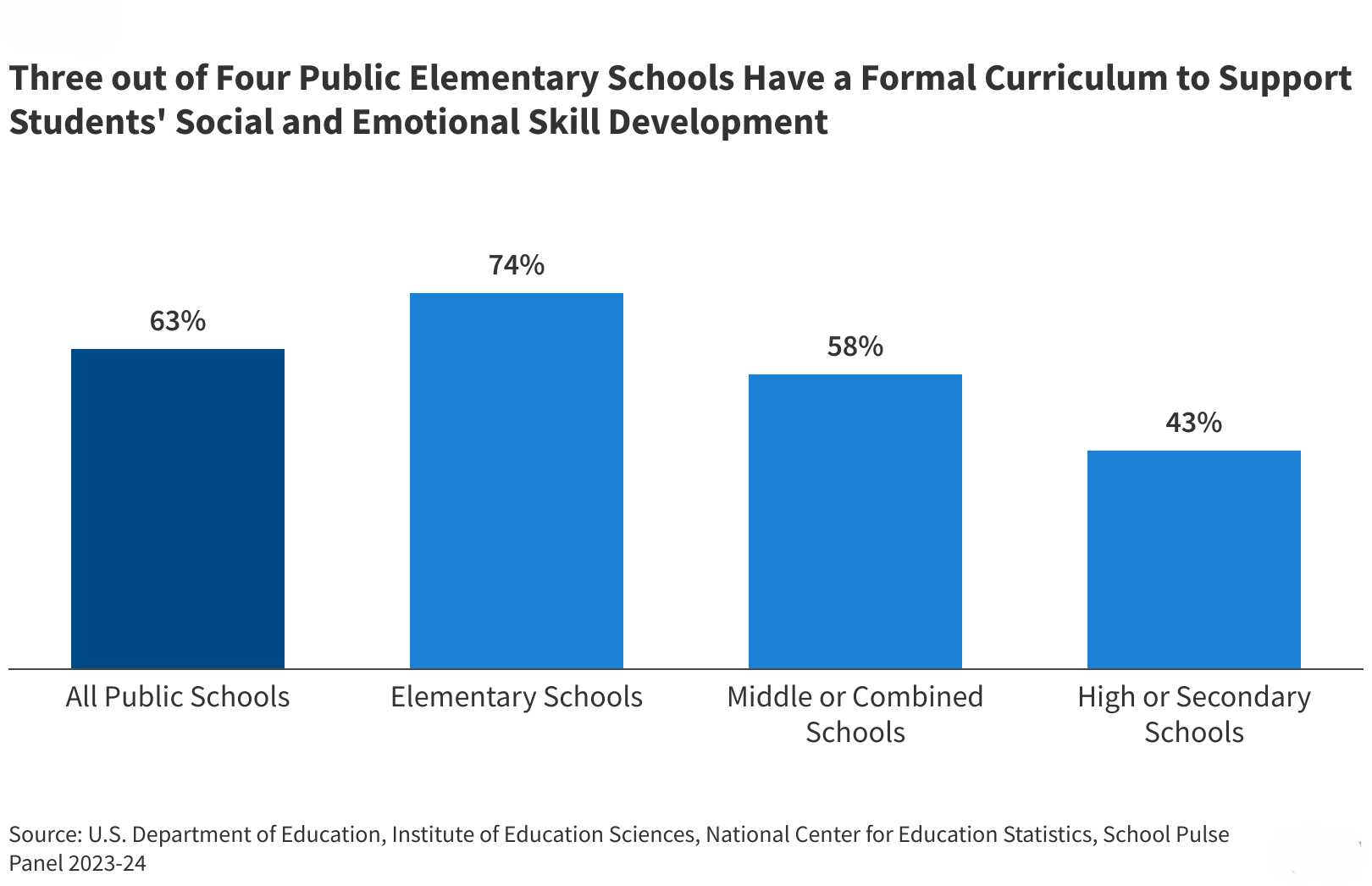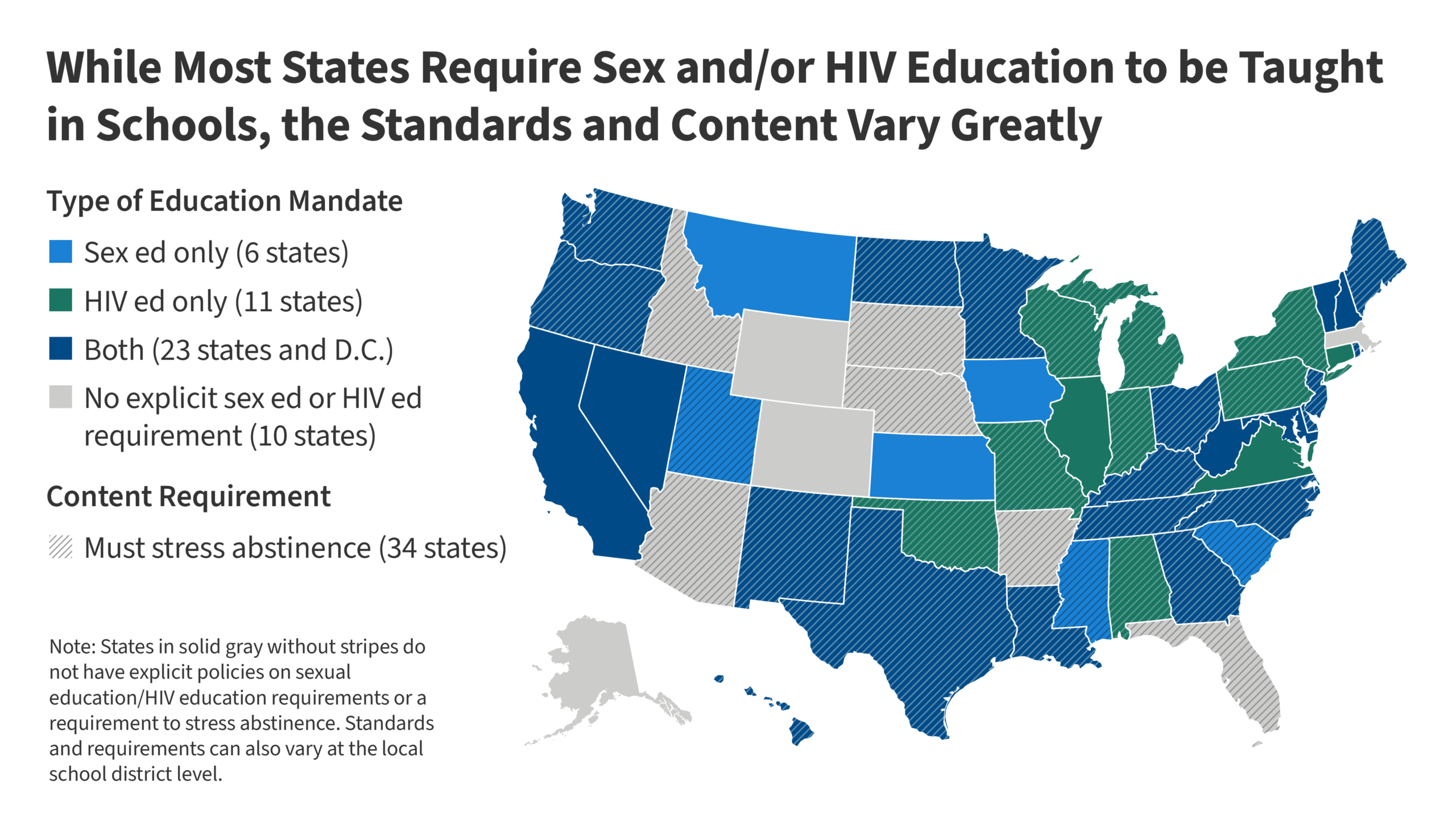Approximately 1 in 5 teens in the United States experience symptoms of anxiety or depression and many youth experience bullying and violence, which can have adverse effects on their mental health. Schools can play a role in promoting mental health and connecting youth to treatment. One approach that many schools have implemented is social and emotional learning, which teaches skills such as emotional management, resilience, and relationship building. Social and emotional learning in schools has received more attention in recent years. For instance, the Surgeon General’s 2021 Youth Mental Health Advisory recommended the expansion of social and emotional programs. Meanwhile, critics argue that these programs should be banned from schools, suggesting that they take away from academic instruction time and incorporate critical race theory.
Social and emotional learning programs focus on developing intrapersonal and interpersonal skills; however, specific program content and integration strategies can vary widely across schools. Goals, benchmarks, and guidelines for social and emotional learning programs in schools are typically developed at the state level. Individual schools may then implement social and emotional learning in a number of ways, including through academic instruction (e.g. group projects to encourage collaboration, or complex problem-solving to encourage persistence); through separate, dedicated time for social and emotional learning instruction; or through schoolwide measures (e.g. disciplinary methods that incorporate social and emotional learning competencies). Regardless of how social and emotional learning is integrated, the content typically focuses on intrapersonal and interpersonal skill building, including self-awareness, self-management, responsible decision making, social awareness, and relationship skills.
Sixty-three percent of public schools in the U.S. had a formal curriculum to support their students’ social and emotional skill development in the 2023-2024 school year (Figure 1). These curricula are more common in elementary schools (74%) compared to middle (58%) and high schools (43%). Additionally, among schools with a formal curriculum, 81% of teachers and 51% of non-teaching staff received training or professional development to implement their school’s curriculum.
Among schools with a social and emotional learning curriculum in the 2023-2024 school year, 72% found that the curriculum was moderately, very, or extremely effective in improving student outcomes. Social and emotional learning has been linked to positive outcomes for students, including fostering emotional intelligence, reducing emotional distress, fostering empathy, developing and maintaining peer relationships, and academic improvement. However, measuring outcomes of social and emotional learning programs can be difficult as implementation strategies and content may vary between programs.
Common barriers to implementing social and emotional learning curricula in schools include lack of funding and materials. Thirty-seven percent of public schools reported not having a formal curriculum for social and emotional skill development in the 2023-24 school year. Among these schools, a lack of time (46%), funding (37%), and materials and resources (34%) were the main reasons for not having a formal curriculum (Figure 2). Several funding opportunities to support social and emotional learning have opened in the last decade, including the Every Student Succeeds Act in 2015, and more recently, the American Rescue Plan Act (ARPA) in 2021, which required school districts to use a portion of funds to support students’ mental health needs. Analyses of how school districts planned to spend ARPA funds found that student social-emotional development was a priority, with many districts allocating some funds to social and emotional instruction materials and training. However, schools often have many competing budget priorities, such as providing funds to address staffing shortages and academic recovery in light of the pandemic, which may limit the amount of funds they have available for social and emotional learning.
As support for social and emotional learning in schools has grown in recent years, so has opposition. Opponents argue that social and emotional learning in schools can take away from academic instruction time; and, more recently, that it incorporates critical race theory and gender identity lessons. This has led to the introduction of several state bills – including Indiana, Iowa, Montana, North Dakota, Oklahoma, Maine, and New Hampshire – banning or limiting social and emotional learning in schools. Supporters, however, argue that social and emotional learning is an evidence-based approach that allows schools to focus on the “whole child”, leading to a wide array of positive outcomes, such as academic achievements, emotional intelligence, and growth opportunities for all students regardless of their backgrounds. This support was recently reflected in a bipartisan resolution designating a “National Social and Emotional Learning Week” which also received recognition from President Biden.
This work was supported in part by the Well Being Trust. KFF maintains full editorial control over all of its policy analysis, polling, and journalism activities.
Publisher: Source link










